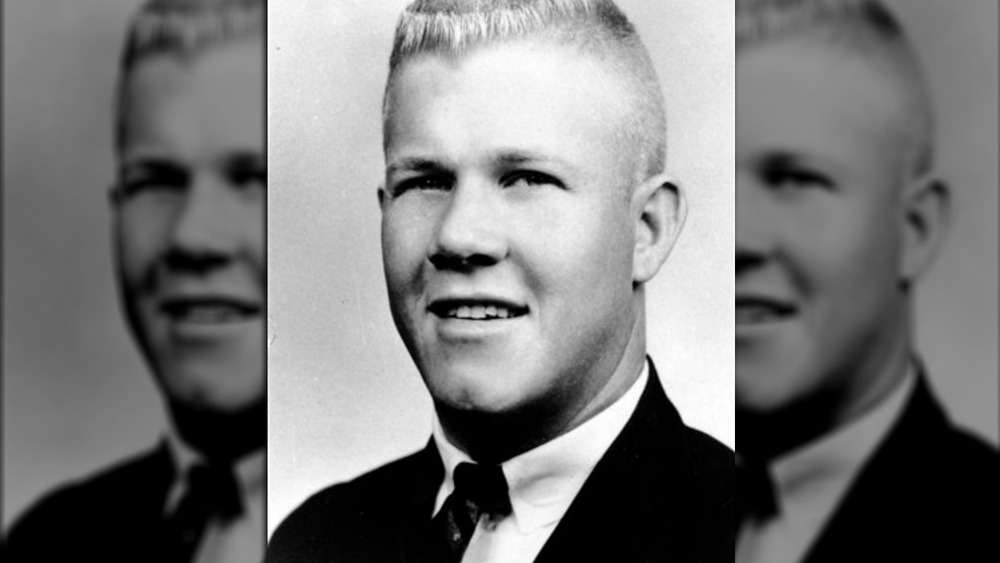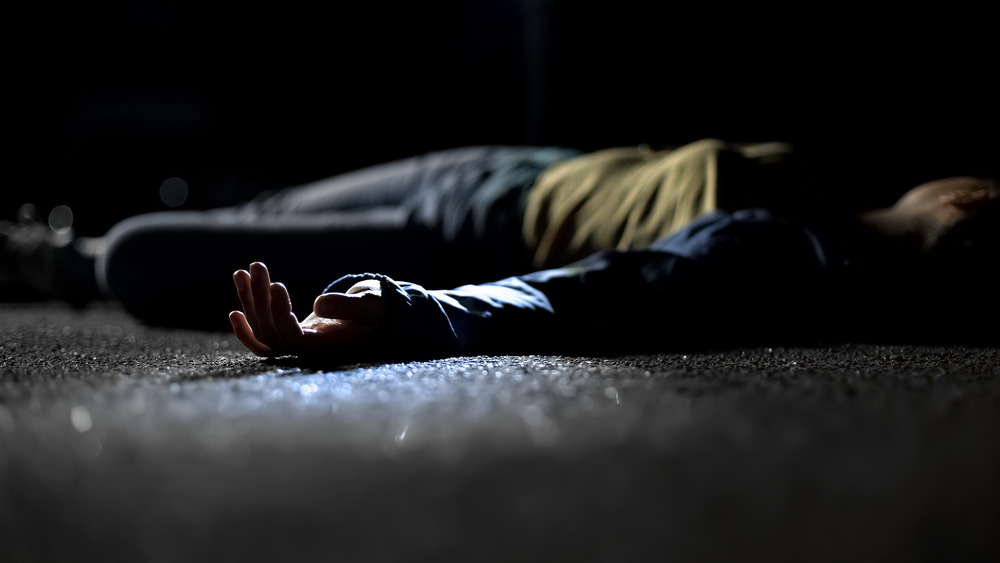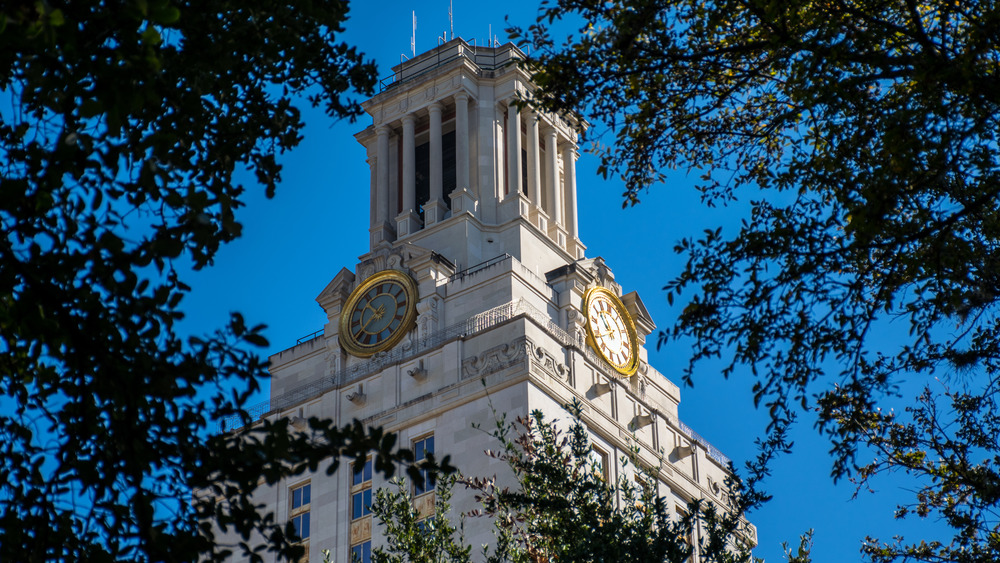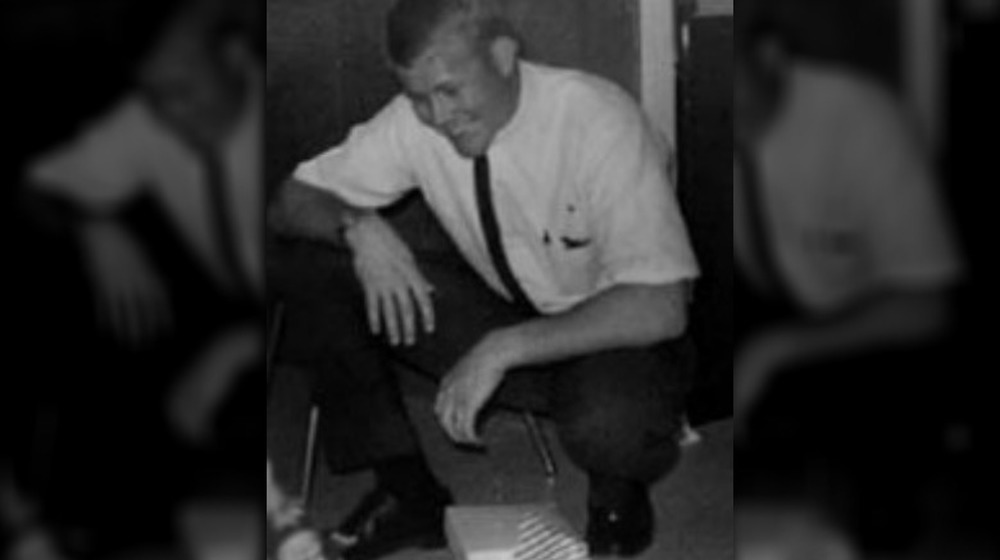The Truth About Mass Murderer Charles Whitman
Mass murders and school shootings seem to plague the media more often as the years go by. The thought of someone showing up to an institution filled with students and opening fire on the innocent is absolutely terrifying, but, as much as we wished it wasn't so, these types of incidents have been a reality in the United States tracing back through the 1800s, according to K12 Academics. Charles Joseph Whitman was one of many to carry out this heinous act. So, what sets him apart from the rest?
In part, Whitman's acts went down in history because of the sheer number of people he killed and injured. The rest of the story's infamy is derived from the cause, or lack thereof, that sent Whitman, a former soldier in the Marine Corps, down such a murderous road.
After he was killed, the media painted him as a former Eagle Scout and military man that everybody loved. But, there was something dark in Whitman. There had to be since less than two years after his discharge, that ex-marine and Eagle Scout would be dubbed "The University of Texas Tower Sniper."
Charles Whitman's first victims
Charles Whitman enrolled at the University of Texas for the second time in 1965. He'd given college a run once before in '61 while he was still enlisted in the military, but his low grades caused him to leave and focus on service, according to the Texas State Historical Association. After he was discharged in '64, he gave it a second try. The only thing he got out of his first attempt was a "meet-cute" between him and his wife, Kathleen Leissner.
Whitman's mother had been going through marital hardships with his father and decided to leave him, so she packed up to move to Austin where she'd be near her son. In early 1966, Whitman drove to Florida to help his mother move, securing a police guard to prevent his father from physically abusing his mother, according to Austin History Center. At the time, it looked like a sweet son was rescuing his mother, but in the end, it would prove to be a deadly decision on her part.
Headaches and anxiety had been hitting Whitman hard for a while. He'd been seeing several doctors and a psychiatrist, who decided Whitman and his reoccurring murderous fantasies were of no danger. Those fantasies became a reality on August 1, 1966, when Whitman murdered his mother in her home before murdering his wife later that morning. Having already killed the people closest in his life, Whitman grabbed his rifle and headed to campus.
The tower sniper
Charles Whitman reached the University of Texas clocktower a little before noon. He brought with him a chest containing two rifles, a shotgun, a cache of pistols and knives, some food and water, and a radio. He planned to be there a while. There's a chance the workman jumpsuit he was wearing would've gained him access to the tower without much static, but Whitman didn't want to take that risk, so he beat the receptionist to death and shot four people on his climb up the clocktower stairs, killing two, according to Britannica. He was on a rampage.
Before reaching the observation deck, Whitman barricaded the reception door. There was nothing left to do but kill. The mass murderer's first shot was through the belly of a pregnant student. His second killed her boyfriend. By the time Whitman was finished, according to the Texas State Historical Association, he'd killed 17 people and wounded 31 others.
Students became heroes that day, risking their lives to drag the wounded to cover while the police exchanged fire with the killer to no avail. Two hours after Charles Whitman had arrived, the authorities and one deputized citizen finally managed to breach the tower and reach the observation deck where they fired on Whitman. The sniper died in the tower.
What made Whitman a killer?
Since the Texas Tower shooting, the question regarding Charles Whitman has been: "Why'd he do it?" Some posit his break was due to abuse he suffered at the hands of his father in childhood, according to Britannica. Others, like Dr. Coleman de Chenar, the doctor who performed Whitman's autopsy, claim he was "an anti-social psychopath," as stated on the Behind the Tower website, fooling friends and family with his charm and charisma while hiding a monster inside. During his psychiatric counseling, he revealed perfect fantasies of events he'd carry out on August 1, proving his mental state was suspect months before the shooting.
In Whitman's suicide note, according to The Atlantic, he asked for his brain to autopsied after his demise, and when doctors cut him open, they discovered a nickel-sized tumor. The glioblastoma could've caused more than his headaches; some doctors believed it was the root of his rampage. The tumor compressed a region of his brain believed to regulate emotions such as fear and aggression, making it a viable possibility for turning Whitman into an unchecked killer.
It's hard to know where the blame for Whitman's horrendous acts lies. Were his doctors partially at fault for missing the tumor and dismissing the psychological cues? Was the tumor the sole cause? Was it abuse? A deeply rooted demon of the mind? We may never know, but we do know that crimes this terrible shouldn't simply be blamed away.



